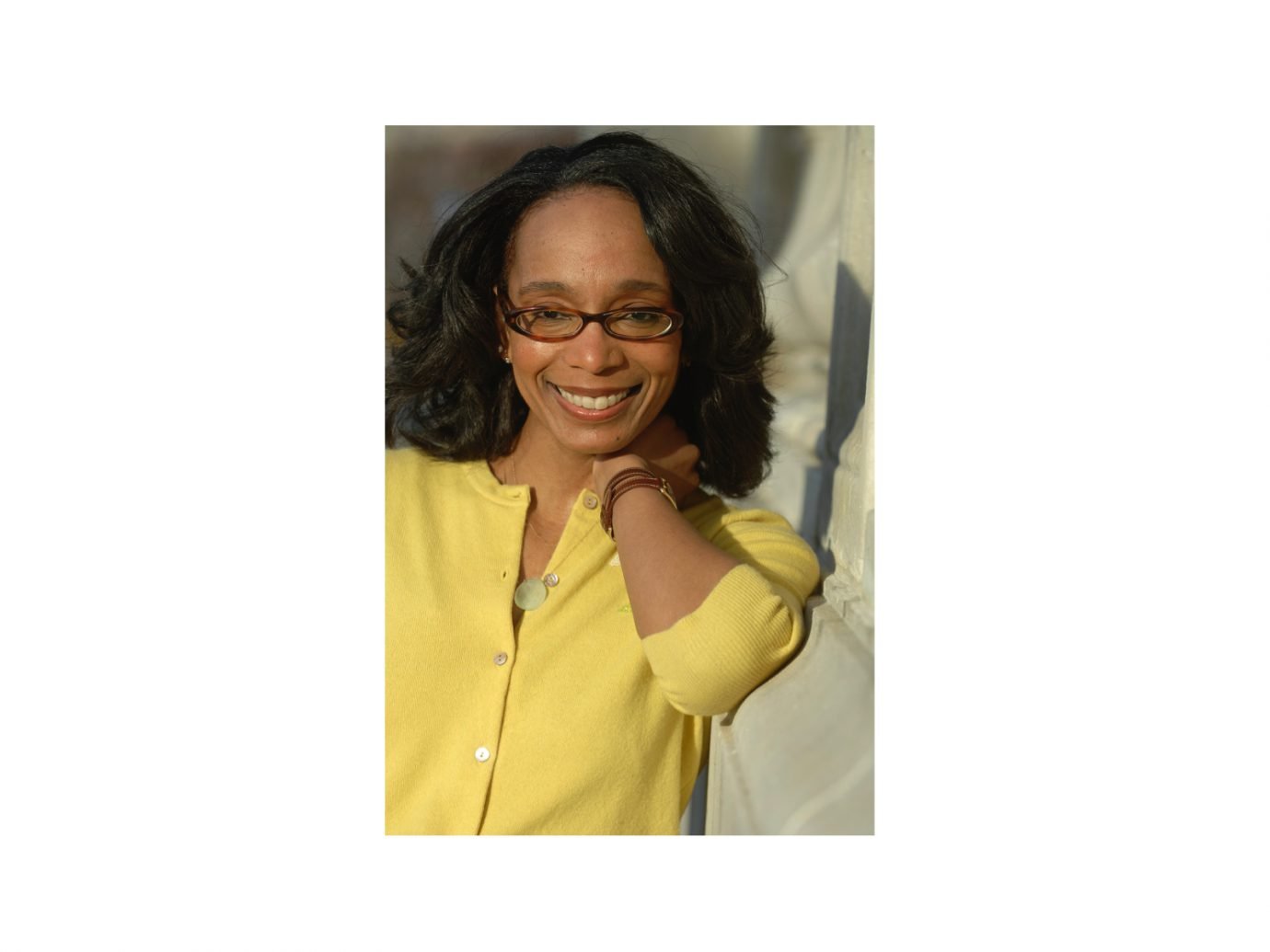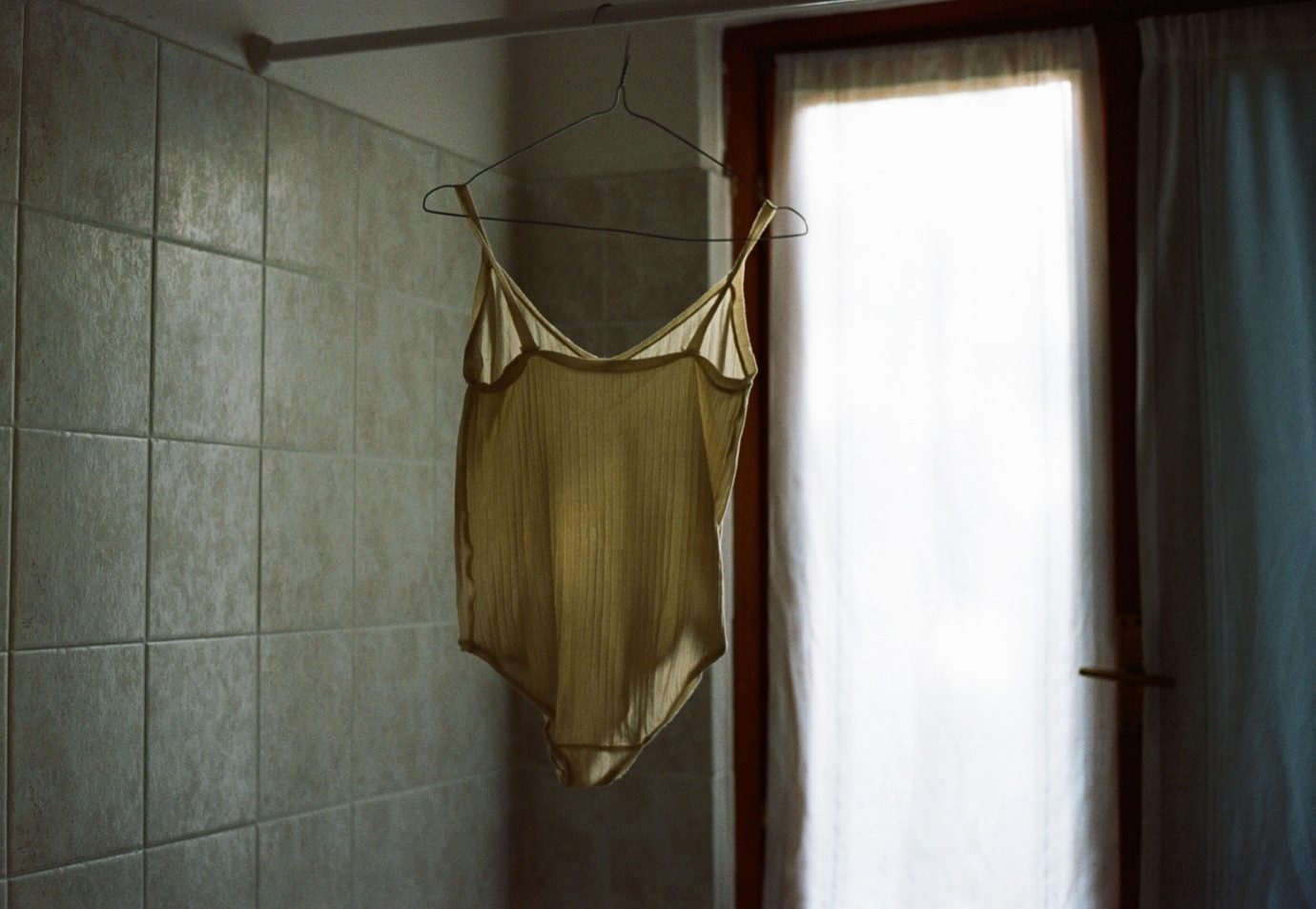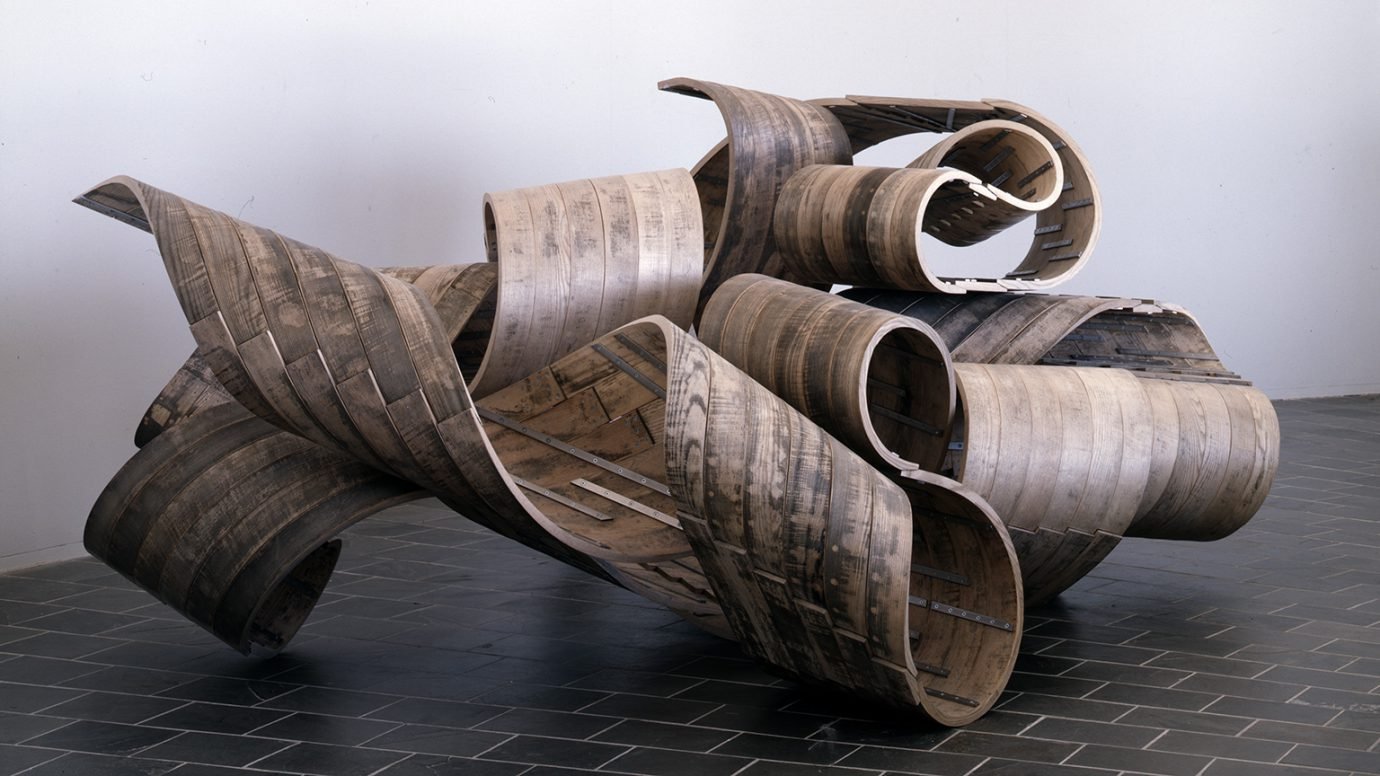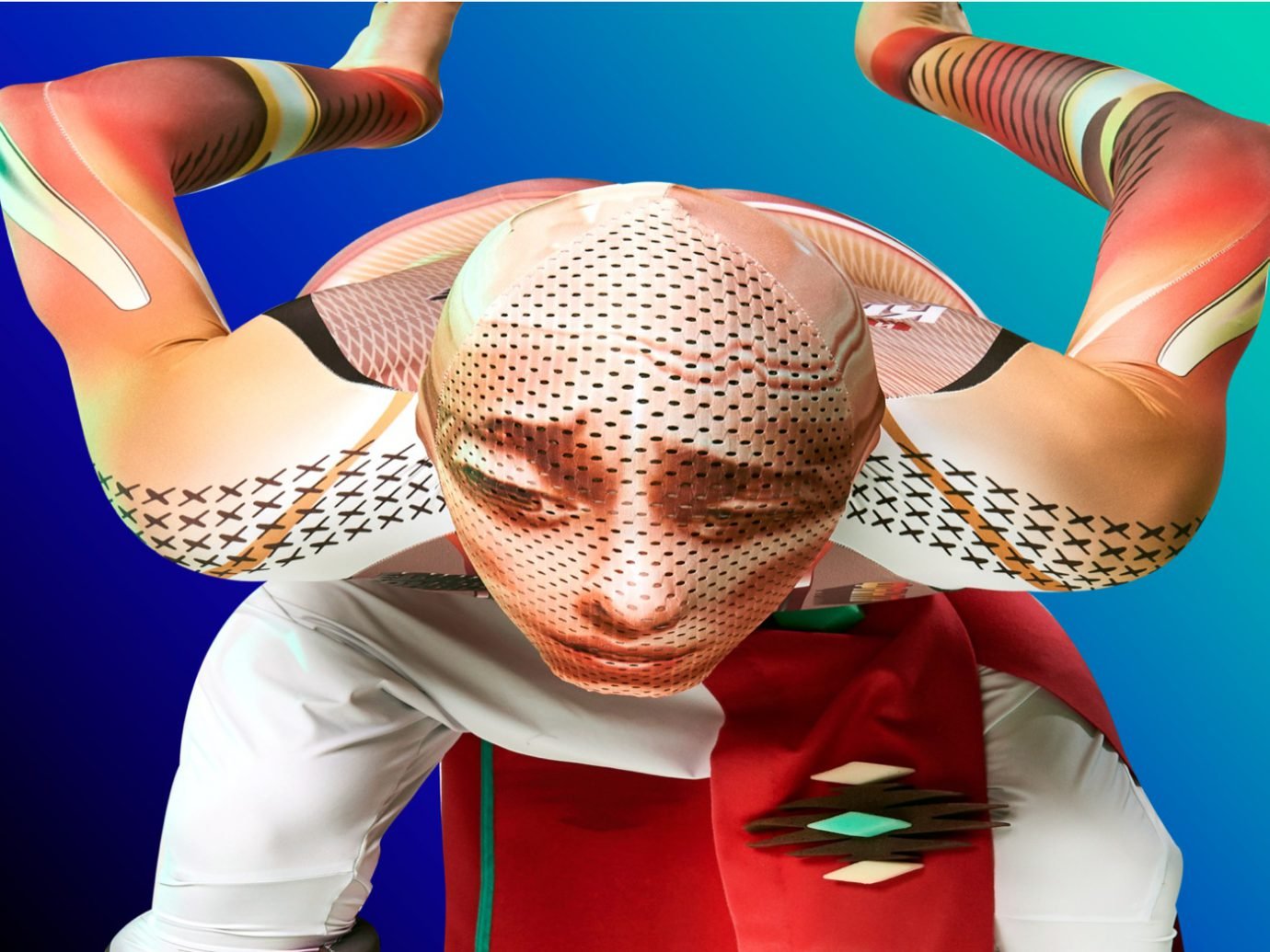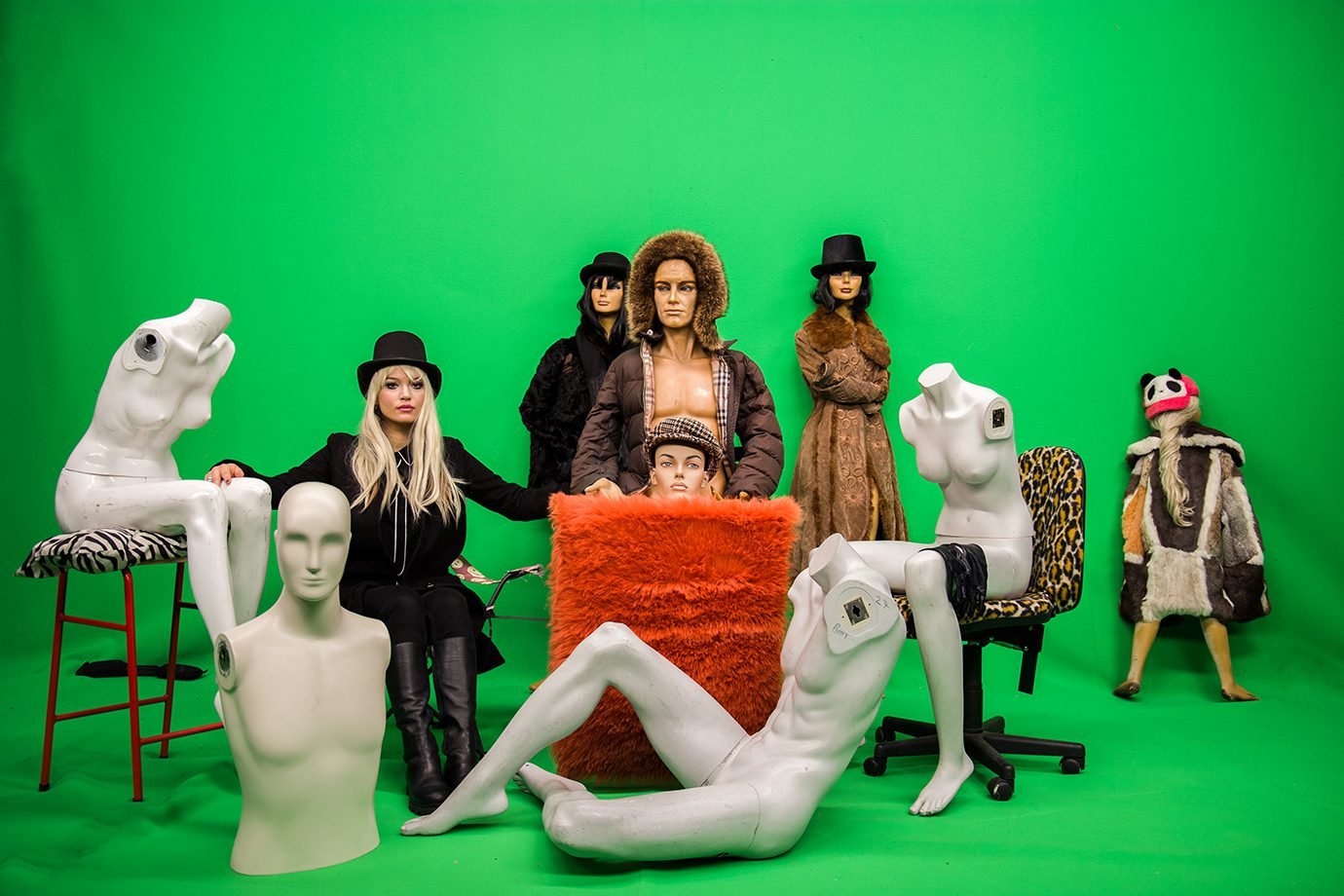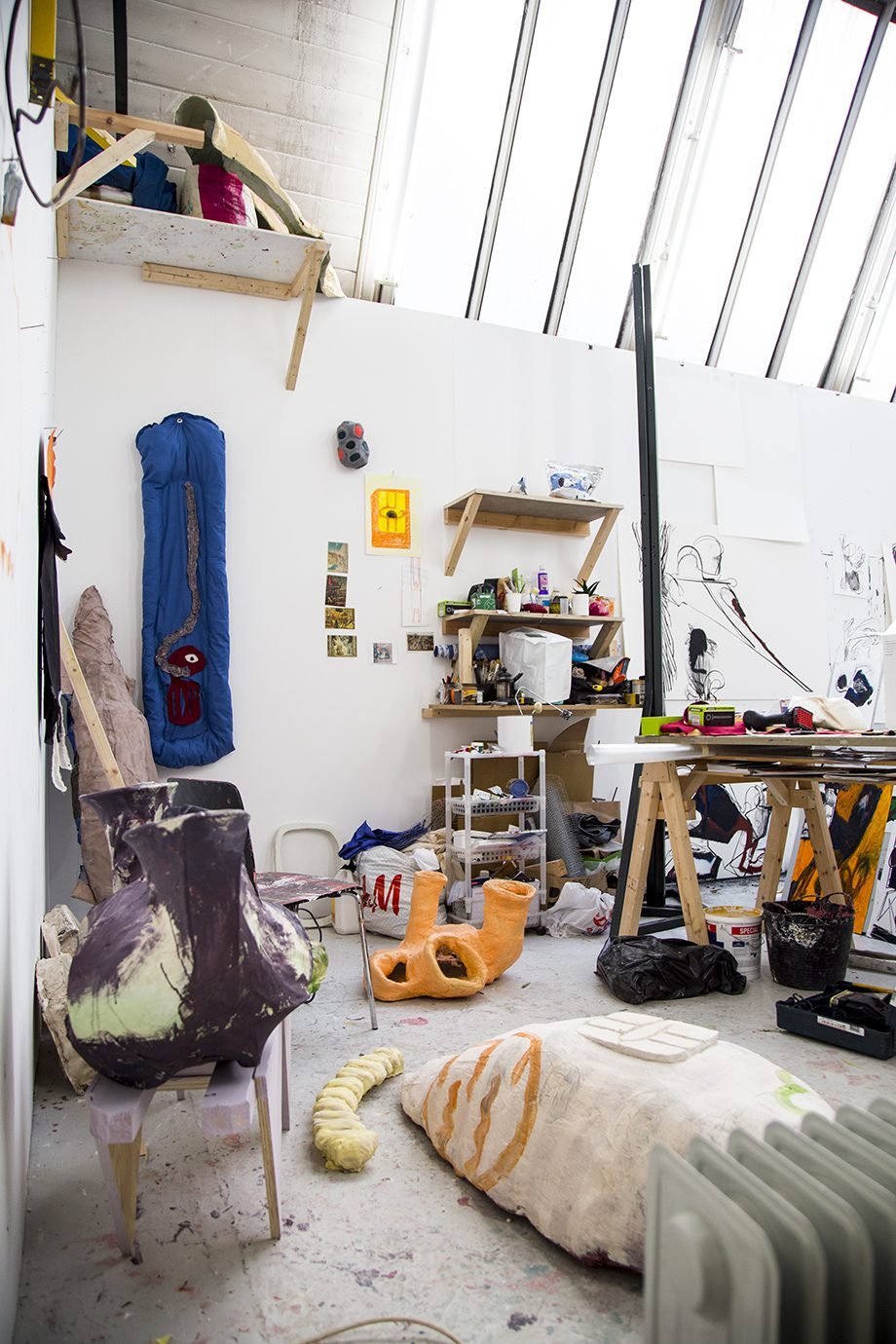For her first book, The Battle of Versailles: The Night American Fashion Stumbled into the Spotlight and Made History, published in 2015, she went through archives at FIT and the Library of Congress, and interviewed the models, designers, and journalists who had attended the 1973 design show-down from both sides of the Atlantic. The iconic event appealed to her as a book project because it was infused with modern concerns resonant well beyond fashion, like the role of race and national tradition.
Givhan thrives when pulling at the threads, so to speak, that inform the power dynamics at play. Sitting in the lobby of her hotel in Saint-Germain-des-Prés as Paris Fashion Week wrapped up, she discussed—in her measured, thoughtful way—her take on social media, email etiquette, and how fashion criticism doesn’t always fall in step with consumer habits.
“HAVING THE CONTEXT IS NOT JUST ABOUT BEING ABLE TO SAY, ‘OH, WELL, IN 1950, THEY DID XYZ’; IT’S BEING ABLE TO UNDERSTAND WHY IT IS THAT, IN 1950, THE COLLECTION LOOKED LIKE THIS, AND NOW IT LOOKS THIS WAY.”
What were the professional milestones that got you to where you are today?
I wish I could say I had this focused path, but I feel like so much of it was serendipity. I did not study fashion anything in college; I was an English major and did American Studies, a multi-disciplinary look at American culture. I went to Princeton, which has a renowned fashion program… [laughs] I’m kidding. I loved writing, and I was going to go to law school, because it was the late ‘80s and that’s what people were doing. But my mother talked me out of it. So I went to grad school for journalism. But I always just thought that I would write about something. I was interested in feature writing, but never particularly interested in fashion. I joke that I have friends from high school who remain dismayed that I actually cover this industry, because there was no indication back then that I would be in this world.
But I started covering fashion at the first newspaper that I worked for, which was the Detroit Free Press. And it was, as I said, happenstance, because the woman who was the fashion editor moved on to become feature columnist, and they needed someone to replace her. I was a generalist in the features section, which at the time was dominated by critics. I was sort of the odd person out, without my own topic to cover. So when fashion opened, I jumped at it, thinking: it sounds interesting. There’s fun travel involved. I wear clothes. I think I’m a good reporter. Why not? I started covering menswear. I have always believed that, if you know how to report, and you can write, you can really apply those skills to any topic. So much of what I’ve learned about fashion has really come from being able to ask people who do it: asking designers, asking people on the business side, asking the kinds of questions that I hope consumers would be interested in knowing the answers to. In that way, I sort of feel like I’m the reader representative who gets to go where they don’t get to.
What components of aesthetics, history, and business are essential for keeping your eye sharp?
I think it’s a bit of everything—maybe not in equal doses, but certainly for houses like Dior or Chanel, any of the large houses that have been around for decades or centuries. It is important to know the history of the house, so that you have a sense of how its current sensibility compares with the original intent: how it’s adapting to cultural influences. Having the context is not just about being able to say, ‘Oh, well, in 1950, they did XYZ’; it’s being able to understand why it is that, in 1950, the collection looked like this, and now it looks this way. That helps you understand the connection between the fashion and its social environment.
And then these big corporate entities have this enormous economic footprint. In that way, it’s important to understand the business side. I mean, I don’t write for a business publication, so I’m not reporting on earnings, but for instance with Saint Laurent, because the aesthetics are difficult on sort of a visceral level… my eye doesn’t like those aesthetics. But I think understanding the history of Saint Laurent can put the aesthetic into a context, so that you know it’s not just coming out of nowhere; it is connected to things that the house did. Knowing that, you have a better sense of the ‘why’ of now. But also, despite the fact that some of those early Hedi Slimane collections for Saint Laurent received negative critical reviews, the customers responded in a completely different way. You have to ask yourself why. It is clearly connecting with shoppers in a very powerful way—and the financial aspect tells you that, which you have to incorporate into your thinking of what’s going on, on that runway.
“IT WOULD BE BORING TO FOCUS ONLY ON WHAT YOU WOULD PERSONALLY WEAR. I DON’T OWN A LICK OF COMME DES GARÇONS, BUT I FIND IT ABSOLUTELY FASCINATING TO WRITE ABOUT.”
How do you distinguish what you like as a person and what you like as a journalist?
I don’t think it’s that difficult. The journalist part of me is interested in a really good story, and whether or not I would personally wear the clothes doesn’t really matter. To me, a good story is a good story. It’s like saying you can’t be a dance critic if you can’t dance. I think that you can absolutely appreciate the craftsmanship and the accomplishment, even though you would never have a personal relationship with it. And the reality is that, sometimes your own personal aesthetic is pretty static, in a way. I don’t think the person who likes boho is suddenly going to start liking Anthony Vaccarello. It would be boring to focus only on what you would personally wear. I don’t own a lick of Comme des Garçons, but I find it absolutely fascinating to write about.
Social media tasks are now part of being a journalist. How does social media help or become a burden in creating a presence? Do you feel you connect to your readership differently through those channels?
All of the above! Is it a burden… It’s a burden in the sense that it just sort of adds to the list of things that you are doing in the middle of a show. For me, if I had my complete and total way, I would sit there and just focus on what’s coming down the runway. But it is a modest burden. It is balanced out by the fact that I find that, when I tweet, phrases or immediate thoughts come to me, which I will use in my review. It may just be a quick way that I describe something, but a lot of times your initial reaction is the most honest reaction. With some shows, I do think it’s better to let it marinate a moment, but things I’ve tweeted reappear in stories.
And I do try to engage with some of my followers. I’m not great at it [laughs] because I feel like there are so many things to do, and talking to virtual people is hard—I’d rather talk to real people. But I had tweeted video from the Balmain show—which for me, aesthetically, is a difficult show—and I find it fascinating the way people respond to it. It was really interesting to see all of the likes and “OMG” responses to this little snippet of video. And that’s worth exploring.
“YOU HAVE TO UNDERSTAND HOW TO WORK IN THE DIGITAL REALM. AT THIS STAGE OF THE GAME, TO SAY YOU WANT TO PURSUE PRINT IS A LITTLE BIT LIKE SAYING I WANT TO PURSUE HORSE AND BUGGIES. IT’S CHARMING, BUT THEIR DAYS ARE NUMBERED. YOU HAVE TO BE ABLE TO MOVE BACK-AND-FORTH BETWEEN BOTH.”
Do you think it’s important to be strategic about using social media?
I think there’s a certain group of people who use it to create a brand for themselves, and get a great seat at a fashion show and build a relationship with the designer that nets them money and free clothes. That’s not journalism. That’s a completely different entity. I think, journalistically, social media is a really great tool, but I think you have to be very, very conscious when using it. I take nothing on social media without an enormous grain of salt. If someone posted something interesting, I would always find that person and speak to them directly. I think that it gets very dangerous when you take something that someone has tweeted, or their Instagram feed, as inarguable truth. Twitter is filled with rumors, and unless it’s coming from a news organization that has something significant to lose by a bad tweet… I’m very wary of people who put “BREAKING” in front of some tweet. Yeah, breaking: you bought stilettos, whatever. [laughs]
Do you feel that digital and print are different approaches for a journalist?
I really consider them different versions of the same thing, in the sense that, to me, the same rules of writing, journalism, reporting, and fact-finding apply. Increasingly, there are certainly publications that are digital-only, but I don’t know if there’s any publication that is print only. So you have to be nimble, and you have to understand how to work in the digital realm. At this stage of the game, to say you want to pursue print is a little bit like saying I want to pursue horse and buggies. It’s charming, but their days are numbered. You have to be able to move back-and-forth between both.
That said, I think there are things that are to be learned from print that are helpful in digital. There is a permanency to print that I think makes you much more cautious, and much more concerned that you’re getting it right the first time. You can’t go into a glossy publication that’s been published. You can’t go into a newspaper and update it. Once it’s there, it’s there. And I think, having that sense that it’s on the permanent record makes you much more circumspect in how you describe things. I often feel that with digital, there is this wonderful aspect of immediate gratification. You can write it, and there it is. One colleague joked that online, there’s no such thing as a ‘correction,’ it’s just an update. But the reality is that the mistake is out there. You can update it, but you can’t take it back. Once you put out bad information, the bad information lives on. The problem with that doesn’t come through as vividly as it should, when people are accustomed to working only in a digital environment. To me, a mistake online is as horrifying and egregious as one in print. Every journalist that I know is horrified in the pit of their stomach if they make a mistake. The sense of ramifications should be there.
With print, it’s more expensive; the barrier to entry is higher. And as a result, most print publications are corporately owned. The complaint, of course, is that that squelches independent voices. But, the good thing about that is that it means there is an entity that is responsible. So that if there is a mistake, or someone feels they have been mistreated, there is this recourse of a lawsuit. There’s an entity that you can sue that has money you could get. And as a result, they do tend to be more careful! And I think the danger with digital is that it’s so much more democratic—that possibility of reach is so enormous that a single person can do tremendous damage. The person who’s damaged has no recourse. And the person who does the damage doesn’t have any kind of warning flag, or something reminding them of the damage that they can do.
“ONLINE, THERE’S NO SUCH THING AS A ‘CORRECTION,’ IT’S JUST AN UPDATE. BUT THE REALITY IS THAT THE MISTAKE IS OUT THERE. YOU CAN UPDATE IT, BUT YOU CAN’T TAKE IT BACK. ONCE YOU PUT OUT BAD INFORMATION, THE BAD INFORMATION LIVES ON.”
What do you advise for breaking those editorial barriers that you cited when presenting her/himself?
Make sure that you’ve read the publication that you’re applying to for a job. And in all its forms—the print edition too. The reality is that for most publications that started out as print, print is still important. Young journalists need to remember that. As much as these legacy publications are moving towards digital and are focused on building that audience, they still rely quite heavily on print. You need to be knowledgeable about what’s going on there.
I think if you’re pitching a story from a freelance position, have a sense of the kinds of stories that the publication publishes, and its point of view. Notice that, for instance, the Washington Post rarely ever runs a story about “what to buy.” We don’t do a “Mother’s Day gift guide.” Notice that, and don’t pitch me “Mother’s Day gift guide” stories!
It’s very smart to go to a specific editor, because as much as people want to say they got a misdirected email and they’ll direct it to the right person, sometimes it doesn’t happen, despite all the best of intentions.
I’ve always believed that, if your heart’s desire is to be writing profiles of Karl Lagerfeld—that will take a while—don’t turn down smaller assignments. And don’t turn your nose up at the opportunity to work at a publication that’s not on the subject of fashion. I’m often asked about internships, and people who want to intern with me specifically. Unfortunately, I don’t have my own posse of interns—I would love to have that—but it’s just not the case. The Post has an amazing internship program, but interns come in to different departments. Just because you’re posted to the business section or the news desk, doesn’t mean you can’t walk down the hallway and pitch a story to the fashion desk. That’s how you get to write fashion stories, even if that’s not what you’ve necessarily been hired to do. You’re in the door. That’s the hardest part.
“I’VE ALWAYS BELIEVED THAT, IF YOUR HEART’S DESIRE IS TO BE WRITING PROFILES OF KARL LAGERFELD—THAT WILL TAKE A WHILE—DON’T TURN DOWN SMALLER ASSIGNMENTS. AND DON’T TURN YOUR NOSE UP AT THE OPPORTUNITY TO WORK AT A PUBLICATION THAT’S NOT ON THE SUBJECT OF FASHION.”
What are your feelings about follow-up etiquette? If you’re new and pitching and your name doesn’t mean anything in the inbox, what is the most polite, insistent-but-not-too-insistent way to get someone’s attention?
Hm. Very good question. You know, I actually just got an email from someone who… she wasn’t pitching a story, but she’s a grad student working on her thesis, and she wanted to set up an interview. I thought it was a really well-written email that made me want to set something up. A few things stuck out to me: one, it was addressed to me. It wasn’t a “Hello there! I’ve sent this mass email to, like, a hundred people, hoping that one of them will respond to me!” That means: “I don’t have any specific idea for you, and I don’t really have a clear idea of what you do—but I’m hoping that you’ll respond!” She explained who she was, and what she was doing, but she also was very specific about why she wanted to talk to me. There were nuggets within the email that made it very clear that she had done her research. She knew the way that I covered fashion, and she was very specific about what it was she wanted me to help her with. It wasn’t can-I-pick-your-brain—which I understand, sometimes that really is what you want to do—but it’s so vague that you’re almost left thinking: I don’t know that I can help you. So I think the more specific you can be, the better you can underscore that you know exactly how that person can help you. I do get a lot of emails from people who are super-enthusiastic about fashion: can I shadow you, can I do an informational interview… and those are really hard to respond to, because they’re so general. Shadowing me is going to be really boring because mostly I’m at my desk making phone calls and typing into a computer. I think they have this vision that every day is fashion week.
For publicists and people pitching freelance ideas, the worst thing that you can do is say: “I saw this story about the trend blue in fill-in-the-name-of-a-publication, and I thought you might be really interested in me writing about the trend of blue for you.” And you just want to say: if my competitor has just written this one-off story, why do you think that I now want to write that story?! There is this thinking that once something has appeared in a major publication, that has somehow made it legitimate and now everyone else will fall in line. Or I’ll get: “I saw that you just wrote a really long, comprehensive story about sustainable luxury fashion. I have a sustainable luxury brand. If you want to do a follow-up, here’s a great story.” No. That window has closed. Don’t recycle another publication’s idea and claim it as another idea that you’re pitching. And don’t read something and essentially pitch the same story again and call it a follow-up. It’s one thing to say: I saw this story you did on sustainable fashion, and it’s such an interesting topic, here’s this offshoot of it that might interest you. But it has to be a news story. It can’t be more of the same.
“IF YOU’RE TRYING TO BUILD A FREELANCE CAREER, YOU DO HAVE TO HAVE MANY EGGS IN MANY BASKETS. BECAUSE UNLESS YOU HAVE A CONTRACT WITH A PARTICULAR PUBLICATION AND THE SAFETY NET OF A CONSTANT INCOME, FREELANCING IS VERY DIFFICULT AND VERY UNPREDICTABLE.”
You were writing a book in tandem to your journalism career: how do you divide your time? For someone starting out, is it better to put your eggs in different baskets, or should journalism be a single-minded pursuit?
For me the writing of the book was a nice contrast to daily journalism, because it was a chance to really dive into a topic and spend a lot of time with it for a while. It was nice to have that very different writing rhythm after that constant deadline adrenaline surge. But it was a difficult juggling act when I was working full-time. The job has to be a priority, because it should be.
If you’re trying to build a freelance career, you do have to have many eggs in many baskets. Because unless you have a contract with a particular publication and the safety net of a constant income, freelancing is very difficult and very unpredictable.
What about journalism as a community? Especially during Fashion Week, it’s a roving gang. Does it feel communal? Does it feel like other journalists are colleagues, or is it disparate, or competitive?
I can only speak for my lovely newspaper colleagues. We are an extremely collegial lot. [laughs] It’s not like this posse of people who are all collaborating, but there aren’t that many newspapers that cover the collections. We all face similar deadlines, similar hurdles. We are certainly competitors, but there’s also a sense of camaraderie, which is really nice, because you are traipsing from one city to another with the same group of people. We are often seated next to or near each other. I read Vanessa [Friedman]. Chris Binkley in the Journal. One of my best fashion friends is Booth Moore from the LA Times. I read them; I admire what they do. I think we all have different strengths, and different ways of approaching the coverage. I learn from them, and I applaud them when they do well. Their success takes away nothing from mine. They just make me want to beat them the next time! [laughs]
The readership for a newspaper is general interest as opposed to niche. You dabbled at Vogue, though: a renowned fashion niche. Why is general interest a better fit?
The thing that I learned at Vogue was that it is a fashion magazine that is part of the fashion world. And it is inside that world; its goal is to celebrate fashion. And it does a magnificent job of that. A general interest newspaper is examining fashion as part of a larger culture: it’s looking at it from the point of view of consumers. A very educated consumer, but not necessarily a fan. In many respects, it’s looking at fashion from the point of view of an open-minded skeptic. For me, that’s a more exciting audience to write for. One of the things I quite like about the Post is that fashion doesn’t have its own section: it’s part of the Style section. That allows fashion stories to bump up against stories about film, music, politics, lifestyle. It allows you to wander pretty widely. It is extraordinarily gratifying when someone says to me: “I’m not interested in fashion, but I loved your story.” I say: “Thank you. But unbeknownst to you, you are interested in fashion.” Because it is part of your life every single day. And what I hope is that people feel more engaged. I don’t care if they decide they’re going to rush out and buy a Dior dress, but I think that they should understand the world in which that Dior dress lives. In the same way that they should care about diversity in television and film at the Oscars. I think they should care about diversity in fashion. It’s my job to explain why. You can define fashion in many ways—I’ve been able to write about it in the context of politics that is uniquely the Washington Post: that is its wheelhouse. It allows you to see other industries through that lens as well.
Any last bit of advice you’d like to emphasize?
The only thing to underscore is that you can’t take things personally. You can enjoy and like fashion, but you can’t be a groupie and do your job well.
And it doesn’t pay to be a jerk. Collegiality, being pleasant, will get you much farther in the end.

